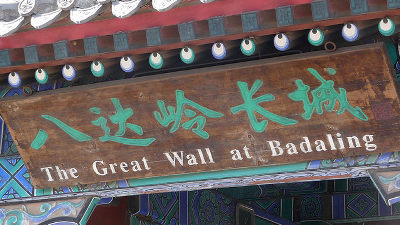Chinese simplified kanji "Simplified character" which can be read by knowing only the original letter

ByCyanocorax
People who have traveled to China should have seen that simplified Chinese characters that are not used in Japan are being used. These were enacted in the 1960's"Simplified characters"Although it is a new font called kanji that seemingly impossible to read at a glance, there are things that can make an approximate sense even in the sense of Japanese if you know the original letter and how to simplify it.
I tried collecting useful things when I knew the original character of simplified letters.
Traditional Chinese simplified character New typeface contrast table
About Simplified Chinese 【Chinese Course】
Kanji of tongue. Although the bias has been simplified, if you remember this form, it is easier to guess the original letter as for the kanji of the tongue.

Kanji of the gate design. This type is easy to understand once you also remember this.

Horse deviation is considerably simplified.

Somewhat confusing shape of car skew. I do not know if I do not know, but if I know the simplified Chinese character, I can guess quite a few kanji.

The letters of the inspection and the insurance are shapes that make it difficult to understand the original letters at first glance.

Besides that, it is a commonly used kanji whose form and shape are very different.

The shape has changed considerably from the original letter, and it is easy to confuse.

When there is a letter of a shape similar to Japanese, caution is necessary because it is easy to make a mistake.

In Chinese, "noodles" are "faces".

It is considerably simplified, it can not be guessed just by looking at it.

This shape has changed considerably too.

If you know the original letter, the meaning of a simple sentence such as a signboard can be inferred from Japanese knowledge.

The original character is "Mamoru". I use it to protect. "Reflective" refers to revetment facilities and levees. Pinyin is "hù".

The original character is "trace". The meaning of what remains behind, such as ruins and evidence. Pinyin is "jì".

The original letter is "request". Means like asking, begging, or inviting. Pinyin is "qǐng".
Based on this, when you read the signboard of the image below, it means that it means "protected ancient paintings", that is, "meaning protected old historical sites, do not carve (do not do graffiti)" I understand. ("Naga" reads as "Nagare" in Japanese, meaning "Do not do it")

ByKgbbristol
◆ Relationship with Japanese former font
The difficult font before becoming a simplified character is called "traditional character". Originally in the era of Qing Dynasty, in 1716"Kang-ee"It is based on the font that was enacted in Japan, and we use a common font for a considerable part of Japanese fonts. There are many variants in Japanese former fonts, but the letters used in some areas differ depending on the region.
Traditional Chinese characters are used in Taiwan and others, but in China, simplified Chinese is used as "normative Kanji", and it is said that traditional Chinese characters should not be used except for specific fields such as classic registration, character study, and calligraphy . Simplified characters are also used in Singapore and elsewhere.
Although it is China which enhances its influence on the world economically and makes it possible to become a superpower that is comparable to the United States, it is also a country where cultural aspects are very large in common with Japan. Given the difficulties of Westerners learning Chinese, it should be able to be regarded as a country that is easy for Japanese people to approach.
Related Posts:
in Note, Posted by darkhorse_log







